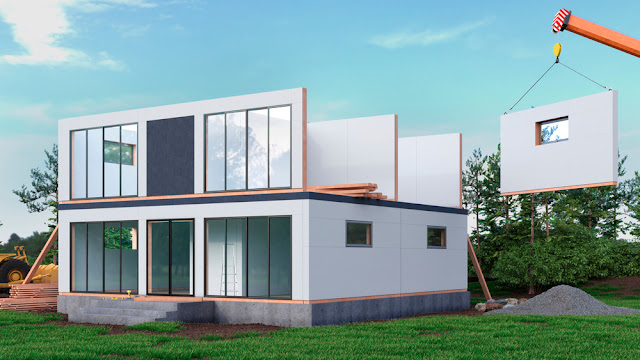Does your heart skip a beat every time your energy bill
arrives? Or perhaps the current environmental crisis weighing heavily on your
shoulders? If these situations resonate with you, keep reading. Our homes
should be our sanctuary, a beacon of comfort, but traditional brick-and-mortar
houses are not cutting it anymore. They demand resources, energy and high
amount of maintenance. But don't worry, there's a substitute on the horizon -
modular homes with green features.
In a society that's moving towards a sustainable lifestyle,
modular homes for sale integrate innovative design, cost-effectiveness, and
environmental friendliness into a single package. This blog post examines the
brilliant future of energy-efficient living by probing the green features of
modular homes found in the market today.
Aided by technology and driven by a dire need to reduce our
carbon footprint, modular homes are becoming increasingly popular. They strive
to harness natural resources, minimize waste, and provide a healthier living
environment. Let's break this down and dig deeper.
What are Green Features in Modular Homes?
 |
| Modular Homes for Sale |
Modular homes are marked by their bespoke capabilities. They
give you the opportunity to select and incorporate such green features
depending on your specific requirements. This customization makes them even
more appealing to a wide audience. The rapid rise in consciousness about our
planet’s future is pushing many to actively seek out these features while
buying or constructing homes.
Working out the best balance between energy-efficient living
and contemporary aesthetics can be tricky. However, the sector has come up with
various solutions which are both effective and visually pleasing. So, let's
take a look at what green features have become increasingly common in modular
homes and why.
Why Opt for Green Modular Homes?
Acceptability of green modular homes is not just due to
their eco-friendliness as one might assume. These homes are cost-effective in
the long term, easy to assemble, and offer customizability. That's not all, an
energy-efficient modular home is also a healthier living alternative compared
to their traditional counterparts. While the initial investment might seem
significant, the cost that's saved on energy bills in the long run makes up for
it and more.
With climate change becoming a real and pressing concern,
the green route is the one well worth considering. Given the rising worldwide
temperatures, global warming, and the increasing scarcity of non-renewable
resources, this move towards sustainable living through green modular homes is
a substantial stride.
Striving for a greener planet, adopting more sustainable
practices, and lowering our carbon footprint are not mere slogans anymore. They
are survival strategies. Consequently, investing in these green features is not
merely about making a statement; it is about preserving our planet for future
generations.
Key Features of Green, Energy-Efficient Modular Homes
Modular homes can be customized to include an array of green
features. Energy-efficient appliances, solar panel systems, and advanced
insulation techniques top that list. However, rainwater collecting system,
efficient HVAC systems, and using low-VOC or non-toxic materials can take the
eco-friendliness of these homes to another level.
An important aspect of an energy-efficient modular home is
its well-designed interior that maximizes natural lighting while minimizing
heat loss. This not only reduces energy bills but also adds an aesthetic appeal
to the home. Another crucial feature includes energy-efficient appliances that
use less power and still deliver top-tier performance.
Quality insulation holds the key to energy efficiency. Most
modular buildings incorporate high-performance insulation to minimize heat loss
during winters and keep the home cool during summers. Alongside, harnessing
renewable energy through rooftop solar panels provides an alternative to
traditional, non-renewable energy sources.
Pros and Cons of Green, Energy-Efficient Modular Homes
Despite the multitude of benefits, there are a few concerns.
The initial cost of setup can be high due to advanced technology and
specialized materials. Further, not all building sites are suited for a modular
home construction. Various ecological and topographical considerations need to
be factored in before taking the plunge.
In conclusion, while the initial hurdles might seem
intimidating, the long-term benefits of investing in green modular homes far
outweigh their drawbacks.
Conclusion
Embracing energy-efficient living is no longer optional;
it's compulsory. Integrating green features into our homes can reduce our
carbon footprint, conserve resources, cut down our energy bills, and lead to a
healthier lifestyle. And modular homes for sale, with their navigation in this
sphere, dispense a novel way to incorporate these sustainable practices in our
lives.
Indeed, the transition may require breaking free from
traditional norms of construction and the way we view our homes. But remember,
it’s not just about us. It's about the future generations who have a right to a
healthier Earth. When it comes to choosing a home, going green is not just
about style, it's about substance.
Remember the torment over the mounting energy bills? Well, with green, modular homes, that’s one concern you can cross off your list.

.png)



No comments:
Post a Comment